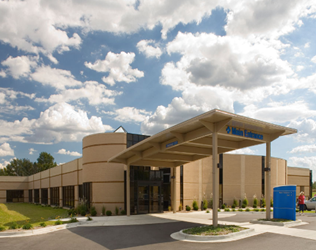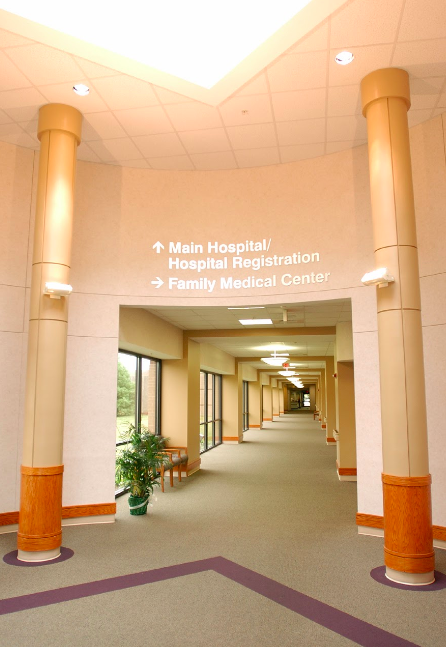Paris Community Hospital Employs Virtual Desktop Infrastructure (VDI) At The Edge To Treat IT Management Complexity, Reduce Costs, And Improve Client Services
Scale Computing

Paris Community Hospital, part of Horizon Health, is a 25-bed critical access hospital located in Paris, Illinois. It is a full-service provider that includes emergency medicine, surgery, rehabilitation services, radiology, diabetes education and more. The hospital has been serving residents of Edgar County since 1968.
Paris Community Hospital was seeking to simplify the management of its IT assets and reduce the time and effort expended on maintaining the environment. With an IT department of four staff to manage 500 machines, the organization was finding it difficult to provide timely and efficient service to users.
The hospital’s environment encompassed a wide mixture of legacy hardware and aging desktops. Making changes to the environment required the team to work on each machine individually.
“Our existing infrastructure was a hodgepodge of technologies and devices,” explained Edgar Weeks, Information Services Manager, Paris Community Hospital. “Over the lifetime of this technology we certainly got value for money, but high maintenance and replacement costs were highlighting a diminishing return for our small, lean organization.”
The other big concern with the infrastructure was compliance. The hospital had a large proportion of machines that had generic sign-ins which caused it to fail security risk assessments.
Evaluating Virtual Desktop Infrastructure (VDI) Options
The hospital decided to evaluate implementing a Virtual Desktop Infrastructure (VDI). This is the process of running a user desktop inside a virtual machine that lives on a server in the datacenter, enabling fully personalized desktops for each user with the security and simplicity of centralized management.
VDI would enable Paris Hospital to streamline its IT management time and budget by consolidating and centralizing its users’ desktops, while delivering end users mobility and the freedom to access virtual desktops anytime, from anywhere, on any device.
Once it had agreed on implementing a VDI solution, Paris Community Hospital extensively researched the market. During its research, the Paris Community Hospital IT team found Scale Computing and its HC3 platform, which is ideally suited to organizations that may have found VDI unaffordable or unrealistic in the past. It chose a combined Scale Computing and Leostream VDI solution to address the mounting challenges of its environment.
Weeks was impressed with what he heard: “Scale Computing and Leostream offered great advice, agility and flexibility, and from the very earliest stages of the project, everyone worked very well together.”
Taking Control At The Edge 
HC3 delivered virtualization, servers, storage, and backup/disaster recovery (DR) into a single, easy-to-use edge platform. All of the components are built into the solution, including the hypervisor, without the need for any third-party components or licensing. HC3 includes rapid deployment, automated management capabilities, and single-pane-of-glass management, helping to reduce mundane daily tasks, saving time and money.
The connection management platform, provided by Leostream, offers the ability to manage the connection of users to desktops and applications in Paris Community Hospital’s on-premises data center, the cloud and across its hybrid environment. Leostream also enables the Paris Community Hospital IT team to deploy and manage desktops and establish access control rules from a single-pane-of-glass interface.
Leostream installed quickly and easily onto a Linux virtual machine running in the Scale Computing environment and provides user access for all with support for nearly any display protocol, including in-browser HTML5 RDP, VNC, and SSH access, from almost any client device. Leostream has made it simple to provision pools of Windows and Linux desktops from a single master image designated in the Scale Computing environment.
The current Paris Community Hospital environment consists of 150 machines, with 125 Windows 10 Desktops and 25 servers running on the HC3 platform. By implementing the Scale Computing and Leostream system, the IT team has made enjoyed significant savings in budget and time – especially, when compared to the offerings from rival suppliers. This includes the ability to deploy the new system with the IT team already in place. Other systems Paris Community Hospital reviewed necessitated a doubling of staff to manage effectively. Another important benefit is the new system is the time savings. Previously, it could take up to a week or more to add a new user to the environment. With Scale Computing and Leostream, it takes less than two hours. An image can be updated within minutes.
“It’s incredible,” said Weeks. “We can have a new version of an application on every desktop within half a day. If a staff member moves from one department to another, using the new VDI solution, it’s just a matter of adding them to some Active Directory groups and, in less than a minute, we can have them on the system. In just a few clicks, they can have their own desktop. Using some of the other solutions we researched, it would have meant doubling our IT staff from four to eight, which would have been a huge extra expense. But the Scale and Leostream solution is so easy to use we don’t need any extra staff. In fact, it’s so efficient we can leave it running, and focus on other areas of the business.”
This level of agility has been a long-standing ambition of the IT team and has become one of the defining achievements of the project. “We now have the capability to carry out maintenance or stand up a new user or services at the drop of a hat, and we see it as an extreme success of the Scale/Leostream solution,” explained Weeks.
The new VDI solution also has addressed the long-standing problem of failed security risk assessments across the system. Today, the hospital can provide secure remote access and mobility to users locally, or at the edge. Because the system requires each user to log in with their Active Directory credentials, it has eradicated the problem of generic sign-ins, making it much easier for the hospital to pass security risk assessments. Doctors and nurses can now login from anywhere, and still remain compliant.
Leveraging Current Assets
The VDI solution also has made it possible to retain and reuse older equipment. Said Weeks, “When we take old equipment out of service we can turn them into dumb client devices by installing Leostream Connect. We’re not tossing away old technology, we’re just using it as dumb client devices and the desktop runs very fast on them because it’s running off the server base. This means there’s no more three-year refresh cycle for us.”
Roll Up Your Sleeves Support
Weeks has been very impressed with the support provided, “The level of support has been amazing. It’s been decades since I have seen a company jump-in, roll up their sleeves and just participate and take full ownership.”
He concluded, “With the previous environment, the high cost of maintenance and replacement, as well as the overhead required to go through so many devices and workstations individually, was a serious issue for a small lean organization like us. Scale Computing and Leostream have delivered a solution that has addressed all the challenges we faced and have done so more cost-effectively than any other options. Today, we can add users faster, manage connections more effectively, provide better control over user access and deliver vastly improved security.”
Summary
Key Challenges
- Small IT team to manage technical resources
- Existing IT environment was complex and difficult to manage
- Generic sign-ins leading to security risk assessment failures
- Needed to simplify the management of its disparate and aging IT assets and VDI solution
Business Benefits
- Simplified IT infrastructure and VDI management with improved performance
- Reduced costs and no additional license fees
- Improved security and control – particularly around regulations compliance
- Rapid deployment of virtual desktops - cut from a week to two hours
- Cost efficient - other solutions required double the IT management staff
